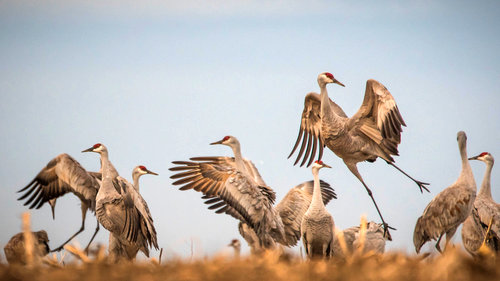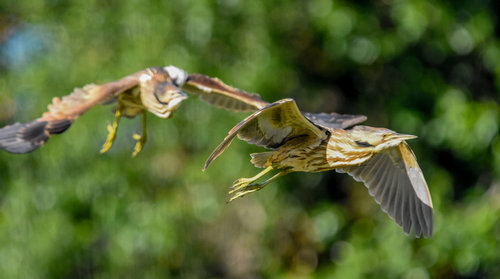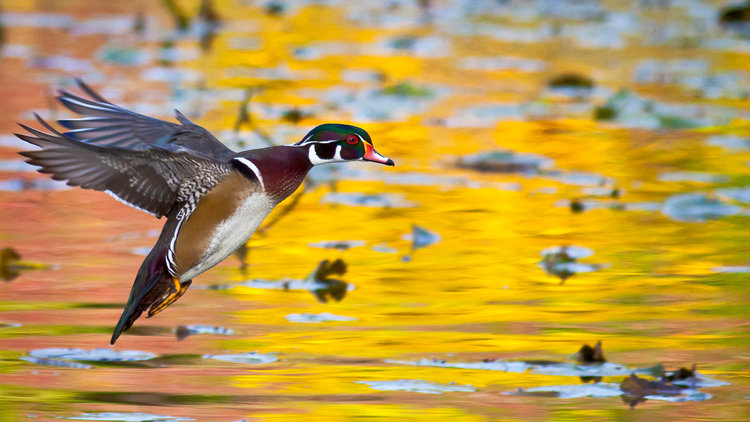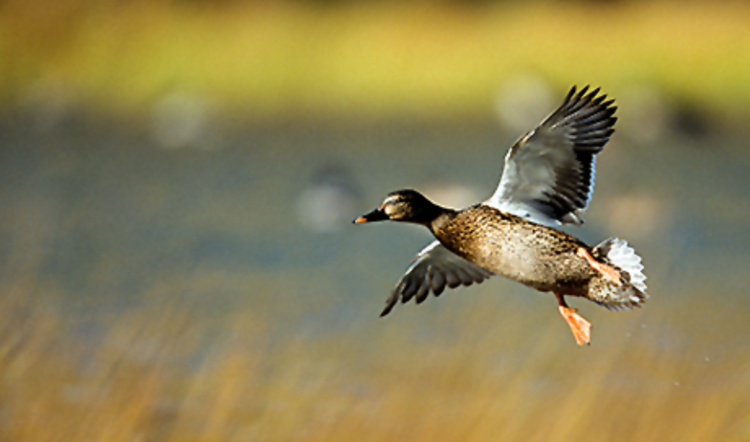
This habitat restoration project will be one of the largest ever on the Lower Columbia River, reconnecting 960 acres of Columbia River floodplain. The project will result in improved habitat, flood control, improved recreation, and a positive economic impact for the surrounding community.
Steigerwald Reconnection Project: Gibbons Creek
August 25th, 2021
Learn about Gibbons Creek, its role in supporting healthy habitat for species on the Refuge, and why reconnection to the floodplain is so important.
More Active
Projects
Ridgefield NWR
Multi-Purpose Building
In September, 2020, Ridgefield National Wildlife Refuge broke ground on a new public access improvement project—a multi-purpose building that will also serve as the administrative office of the Ridgefield National Wildlife Refuge Complex, which includes Steigerwald Lake, Pierce, and Franz Lake National Wildlife Refuges in the Columbia River Gorge.
Tualatin river nwr
Chicken Creek Restoration
This habitat restoration project will realign a historic creek channel and create a continuous 280-acre wetland at the Refuge’s Atfalat’i Unit. The project will result in increased diversity of animal and plant life, an additional 1/2 mile of walking trail, and better quality water flowing to the Tualatin River.
Ridgefield NWR
Port Entry & Carty Lake Trail
In preparation for the further development of the Port of Ridgefield site, the Refuge has created a new entrance and trail that can be accessed from the Port. The entry gate area will have interpretive information about the Refuge and a small fee-free area with views of Carty Lake. Venture further into the fee area of the Refuge and experience the Carty Lake Trail that connects to the Oaks-to-Wetlands Trail and Cathlapotle Plankhouse.
Ridgefield NWR
Prescribed Fire
This habitat restoration tool was reintroduced to Ridgefield National Wildlife Refuge in September 2018, having been absent from this landscape since Europeans came to the area in the 1850s. Prior to that, prescribe fire was a common practice of indigenous communities of the area. Prescribed fire will continue to be a tool in the toolbox for the Refuge, as it is a total reset of the soil in one action, helping native vegetation and wildlife flourish.
Tualatin River NWR
Wetland Restoration
This restoration project, located in the wetlands just below the Tualatin River NWR Visitor Center, will introduce a variety of native plant species and support a greater diversity of wildlife. While the project will involve temporarily draining these wetlands, in time, they will be alive once again with abundant waterfowl, marsh birds, amphibians, and pollinators, just steps from the Refuge parking lot.

Completed
Projects
Ridgefield NWR
River ‘S’ Bridge Replacement
This public access improvement project will replace the bridge that provides access to the Refuge’s River ‘S’ Unit, home of the Auto Tour Route and Kiwa Trail. The current single-lane bridge will be replaced with a two-lane bridge that will pass over both Lake River and the BNSF railroad tracks.
Ridgefield NWR
Main Avenue Project
This public access improvement project will significantly improve the road conditions where Main Avenue crosses over Gee Creek near the entrance to the Refuge’s Carty Unit. In addition to raising that portion of the road and replacing a 10-foot culvert with a 40-foot culvert, the city sidewalk will be extended all the way to the entrance of the Carty Unit.
Ridgefield NWR
Oak Release
This project will create a thriving oak woodland at the North end of the Refuge’s Carty Unit by removing non-oak trees (primarily Douglas fir) in order to make more room for Oregon white oaks to grow. The full restoration will take several years and, at times. the area will resemble a logged site. Long-term, wildlife and visitors will benefit from a more resource-abundant and sustainable habitat that will attract a great diversity of wildlife.

Meet the
Refuges

Ridgefield NWR
Official Refuge Website
Supporting Partner
Friends of Ridgefield National Wildlife Refuge
Habitat and Access Improvement Projects
A Refuge for Wildlife and People
Ridgefield National Wildlife Refuge consists of two distinct sections (or “Units,” as we call them): The “Carty Unit” to the North and the “River ‘S’ Unit” to the South. Each of these Units offers unique ways for visitors to experience wildlife and their habitats.
The Refuge was established in 1965 to provide wintering habitat for the dusky subspecies of the Canada goose. Today, the Refuge provides a window to the past, present, and future of nature and the human relationship to it. It preserves and enhances habitat for wildlife, while revealing and protecting the evidence of the people who once thrived on this landscape and maintain their cultural connection to this day.
Embedded within the fast-growing city of Ridgefield, WA, the Refuge is woven within the fabric of the community. Upcoming habitat and public access improvement projects are not only addressing today’s needs, but are anticipating the coming needs and impacts of a larger, urban community.
Ridgefield National Wildlife Refuge Complex
Ridgefield National Wildlife Refuge is part of the Ridgefield National Wildlife Refuge Complex, along with Steigerwald Lake National Wildlife Refuge. Further into the Columbia River Gorge, there are two more refuges that are part of the Complex, Pierce and Franz Lake National Wildlife Refuges. The refuges are “Complexed” for the purpose of management efficiencies and resource sharing. They are also all connected by a common natural resource, the Columbia River.

Steigerwald Lake NWR
Official refuge website
fws.gov/refuge/Steigerwald_Lake
Supporting Partner
A Gorge-ous Place to Connect with Nature
Teeming with wildlife at the eastern edge of Camas and Washougal, Washington, this Refuge presents a fantastic opportunity to connect with nature along winding trails and view iconic wildlife along the mighty Columbia River. Over 200 of Clark County’s 300 bird species have been observed on this relatively small refuge.
Absent from the Refuge has been a direct connection to the Columbia River, as it once had. In the coming years, that connection will be in place once again, benefitting aquatic species like salmon and lamprey, while providing a more natural environment for migrating waterfowl and other bird and mammal species. This important project will also provide an opportunity to improve the visitor experience, creating new vantage points and chances to become immersed in the beauty of the Refuge.
Ridgefield National Wildlife Refuge Complex
Steigerwald Lake National Wildlife Refuge is part of the Ridgefield National Wildlife Refuge Complex, along with Ridgefield National Wildlife Refuge. Further into the Columbia River Gorge, there are two more refuges that are part of the Complex, Pierce and Franz Lake National Wildlife Refuges. The refuges are “Complexed” for the purpose of management efficiencies and resource sharing. They are also all connected by a common natural resource, the Columbia River.

Tualatin River NWR
Official Refuge Website
Supporting Partner
The Friends of Tualatin River National Wildlife Refuge
Habitat and Access Improvement Projects
Chicken Creek Restoration Project
A Wild Wonderland of Nearby Nature
Located on the outskirts of Portland, OR, Tualatin River National Wildlife Refuge is one of only a handful of urban national wildlife refuges in the country. Situated within the floodplain of the Tualatin River, the Refuge comprises less than 1% of the 712 square mile watershed. Yet, due to it’s richness and diversity of habitats, the Refuge supports some of the most abundant and varied wildlife in the watershed.
The Refuge is now home to nearly 200 species of birds, over 50 species of mammals, 25 species of reptiles and amphibians, and a wide variety of insects, fish and plants. The Refuge has also become a place where people can experience and learn about wildlife and the places they call home, whether through self-guided discovery or by participating in one of our many educational programs.
Tualatin River National Wildlife Refuge Complex
Tualatin River National Wildlife Refuge is part of the Tualatin River National Wildlife Refuge Complex, along with Wapato Lake National Wildlife Refuge. The refuges are “Complexed” for the purpose of management efficiencies and resource sharing. They are also all connected by a common natural resource, the Tualatin River.

Wapato Lake NWR
Official Refuge Website
Supporting Partner
The Friends of Tualatin River National Wildlife Refuge
An up-and-coming wetland treasure
Located to the West of Portland, OR, in the growing town of Gaston, Wapato Lake National Wildlife Refuge is helping to reverse the trend of wetland loss in the United States.
Historically, seasonal flood waters from the Tualatin River created Wapato Lake. Rich peat soils found in the lakebed supported wetland habitats that were surrounded by hardwood forests on the adjacent floodplains. These plant communities supported diverse wildlife communities that included migrating and wintering waterfowl, raptors, migratory songbirds, fish, amphibians and reptiles.
Refuge staff are working with partners to learn about the natural cycles of the lakebed and to plan habitat restoration activities to mimic those cycles. Ultimately, restoration efforts at Wapato Lake National Wildlife refuge will contribute to the health of the Tualatin River watershed and those who live within it.
The Refuge is not yet open to the public, but we are working with partners and the community in that direction.
Tualatin River National Wildlife Refuge Complex
Wapato Lake National Wildlife Refuge is part of the Tualatin River National Wildlife Refuge Complex, along with Tualatin River National Wildlife Refuge. The refuges are “Complexed” for the purpose of management efficiencies and resource sharing. They are also all connected by a common natural resource, the Tualatin River.